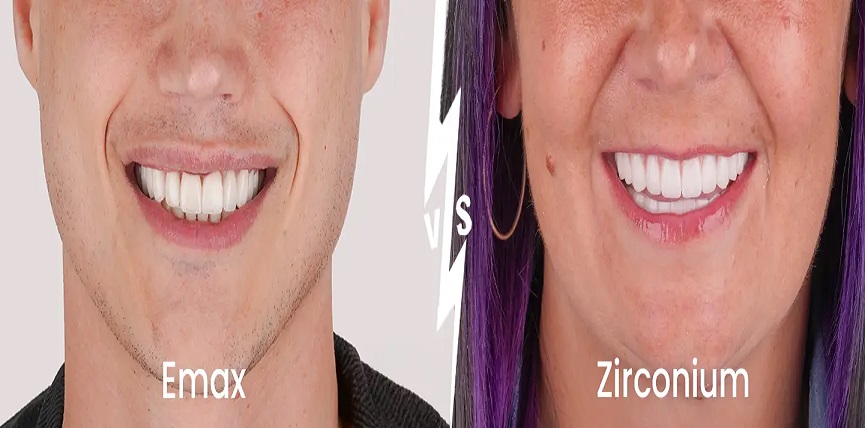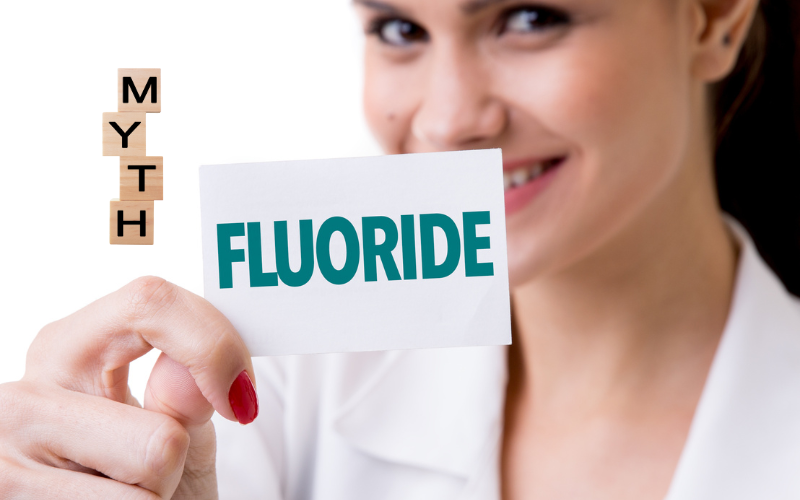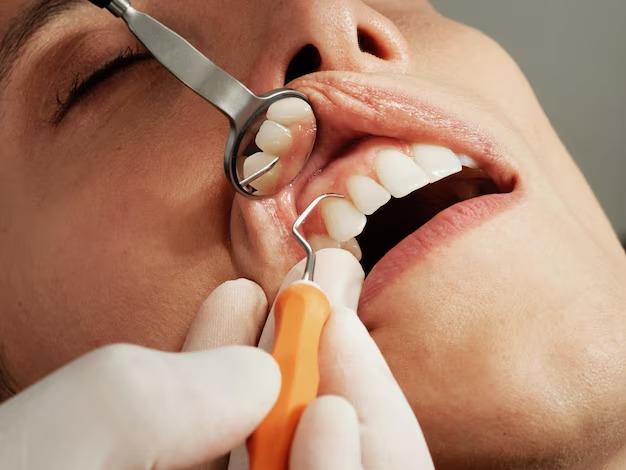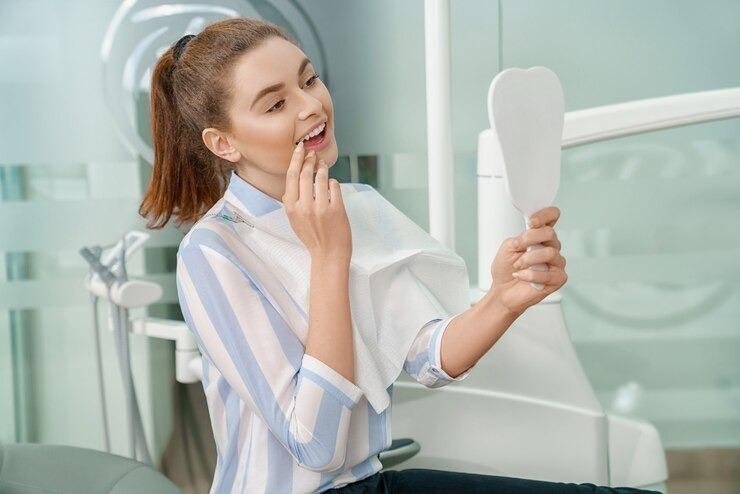
Emax vs Zirconia Crowns
A Detailed Comparative Guide
Dental crowns have evolved significantly, offering durable, aesthetic options that cater to various clinical needs. Among the most popular choices today are Emax and Zirconia crowns. Understanding their differences is crucial for patients and dental professionals seeking optimal results.
What Are Emax and Zirconia Crowns?
Made from lithium disilicate glass-ceramic, known for high translucency and aesthetics. Commonly used in anterior (front) restorations due to their natural appearance.
Composed of zirconium dioxide, a type of ceramic oxide. Renowned for their exceptional strength and durability, making them ideal for posterior (back) teeth with high bite force.
Difference in Composition
| Feature | Emax | Zirconia |
|---|---|---|
| Main Material | Lithium disilicate glass-ceramic | Zirconium dioxide (ZrO₂) |
| Appearance | Highly translucent, enamel-like | Opaque to semi-translucent, white |
| Strength | High (up to 500MPa) | Very high (900–1,200MPa) |
| CAD/CAM Use | Yes | Yes |
Indications
1. Anterior teeth restorations (front teeth)
2. Patients prioritizing a natural, lifelike smile
3. Veneers, inlays, overlays, short-span bridges in visible areas
4. Patients with metal allergies
1. Posterior teeth restorations (molars, premolars)
2. Cases requiring high durability (bruxism, strong bites)
3. Large restorations, full-mouth rehabilitations
4. Covering discolored or damaged teeth
Advantages
1. Superior translucency for excellent aesthetics
2. No metal—no allergic reactions or gum-line grayness
3. Conservative tooth preparation (requires less removal)
4. Versatile; can be used for veneers, inlays/onlays, and crowns
5. Good strength for most dental situations
1. Outstanding strength and fracture resistance
2. Suitable for high-pressure areas (back teeth)
3. Long lifespan (10–15+ years with proper care)
4. Biocompatible and hypoallergenic
5. Minimal staining, highly resistant to wear and corrosion
Disadvantages
1. More expensive than other types
2. Slightly less durable than zirconia, not ideal for all back teeth, especially for heavy grinders
3. May fracture during adjustment or high-impact, especially if not handled properly
4. High translucency may not mask highly discolored teeth
1. Slightly less natural in appearance (less translucent), may appear more opaque
2. Possibility of wearing down opposing teeth if not finished correctly
3. Harder to adjust and require specialized bonding techniques
4. Can be more costly than conventional metal-ceramic crowns
Crown Selection Guide
| Scenario | Recommended Crown | Rationale |
|---|---|---|
| Highly aesthetic anterior tooth requirement | Emax | Superior natural look |
| Posterior teeth restoration (molars/premolars) | Zirconia | Maximum strength and durability |
| Patient with bruxism or high chewing forces | Zirconia | Fracture resistance |
| Covering severely stained or dark underlying tooth | Zirconia | Better masking of discoloration |
| Need for thin restoration/minimal tooth prep | Emax | Less invasive preparation |
| Full-arch/bridges in load-bearing region | Zirconia | Superior mechanical performance |
Maintenance and Longevity
1. Require standard oral hygiene: regular brushing and flossing
2. Slightly more prone to staining from coffee, wine, or tobacco—regular cleaning helps maintain brightness
3. Sensitivity to fracture if excessive pressure or force is applied
1. Extremely resistant to damage, wear, and staining
2. Simple maintenance: standard brushing, flossing, avoid excessive biting on hard objects
3. Regular dental check-ups are important to monitor crown and gingival health
4. Less likely to discolor or accumulate plaque, but require professional cleaning for optimal longevity
Both types benefit from gentle care using a soft toothbrush and non-abrasive toothpaste. Routine dental visits every six months help ensure longevity and aesthetics.
Summary Table: Emax vs Zirconia Crowns
| Feature | Emax | Zirconia |
|---|---|---|
| Aesthetics | Best for matching natural teeth | Good, but may appear more opaque |
| Strength | Very high, less than zirconia | Exceptional, ideal for molars |
| Durability | 5–15 years+ with care | Often 10–15 years+ |
| Tooth Preparation | Conservative | More aggressive, thicker prep |
| Cost | Higher | Comparable to or higher than Emax |
| Wear on Opposing Teeth | Low | Possible if not polished properly |
| Indications | Anterior, visible teeth, veneers, inlays | Posterior, bridges, high-force |
Conclusion
The choice between Emax and Zirconia crowns hinges on specific patient needs.
1.Choose Emax for highly visible teeth where aesthetics are paramount and underlying tooth color is not severely dark.
2.Choose Zirconia for high-stress, load-bearing restorations, heavy grinders, or where masking discoloration is essential.
Both options provide durable, metal-free solutions that have transformed modern restorative dentistry. Optimal results are achieved when selection is customized to the individual's clinical scenario, preferences, and aesthetic expectations.
Note: Always consult with your dental professional, who can tailor the recommendation based on your oral health, functional needs, and cosmetic goals.












